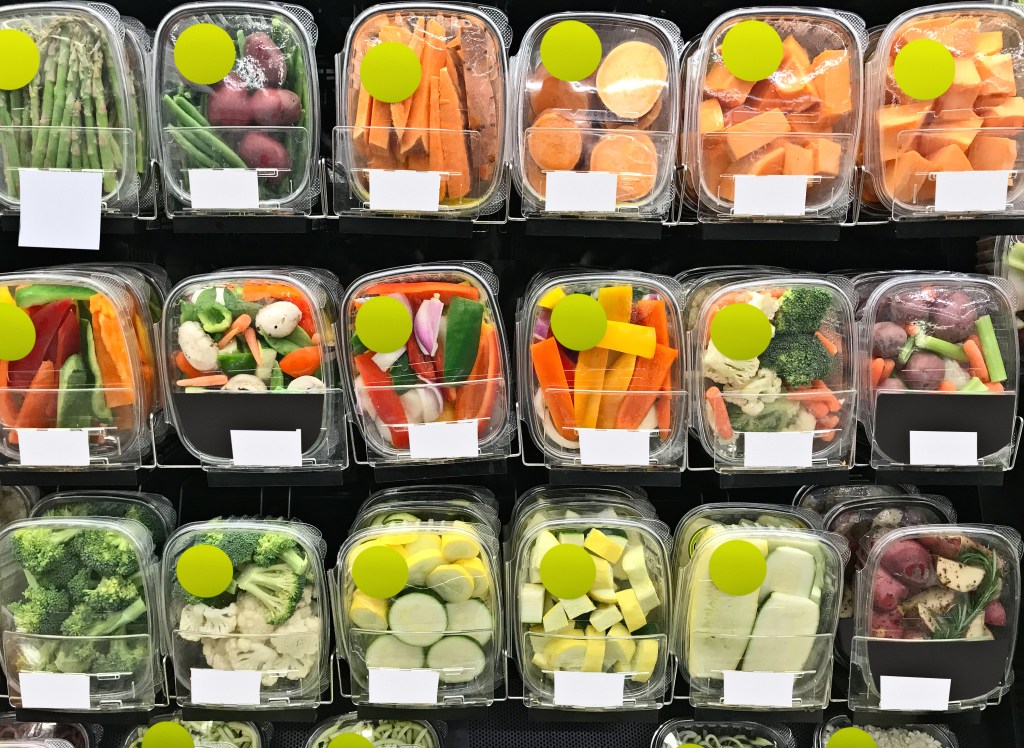The shift to purpose-driven product choices
Today’s consumers do their homework when it comes to product ingredients and certifications. It’s no surprise—200 million consumers adhere to a diet or health-related program while 180 million have allergies or food intolerances. In many cases, these shoppers forgo brand loyalty to satisfy health, wellness, or lifestyle needs like gluten free, sustainable, or heart healthy. In fact, more than 70% of shoppers look for specific product characteristics when choosing a brand.
This conscious weighing of choices based on health benefits and ingredients influences purchase behavior across aisles. Consumers are even searching for “healthy” products in the cookie and ice cream categories. This signals to CPG brands that healthy product options are now an expectation of the mainstream shopper, not just a priority for health enthusiasts. In the beauty space, consumers are more educated than ever thanks to social media, and 74% of beauty shoppers seek out specific ingredients when making purchases. Beauty purchase drivers include once unfamiliar-sounding chemicals like hyaluronic acid and glycolic acid.
A quick Google search offers millions of results that shoppers can use to inform healthier choices at the grocery store. The data confirms that shoppers are indeed using this knowledge to fill their baskets.
One good example is “heart-healthy” products, an important food attribute among the majority of consumers in a recent survey. While overall year-to-date grocery sales were down compared to the COVID hoarding shopping of last year, sales of “heart healthy” products were steady across many categories. Private label products showed a slight increase from the previous year. A standout among heart-healthy products was Dave’s Killer Bread (up 13% in dollar sales compared to the previous year).
The trend towards purchasing products based on lifestyle choices and wellness needs shows no sign of slowing down. For example, many of the 121 million Americans (48% of the U.S. population) that have cardiovascular disease actively search for heart-healthy products.
E-commerce sets new expectations
This past year, the online grocery shopping experience helped refine shopper product preferences. In 2020, 22 million new online CPG shoppers experienced the convenience of search and a customized digital shelf. Previously hard to find items like heart-healthy bread, skincare products with glycolic acid, or biodegradable shampoo were only a few keystrokes away.
This shift from brand- to needs-based purchase behaviors and increased online shopping offers big opportunities for brands who have the ability to optimize their products for search. Still, 84% of brands fail to claim one or more of the three most searched-for attributes that apply to their products. This miss can amount to millions in missed online sales opportunities.
Tapping into shifting trends for bigger growth
Capitalizing on these shifting consumer behaviors means connecting purposeful shoppers with products that meet their needs by making these products more discoverable online. Detailed product attribute data is the missing piece of this equation for many brands. With detailed, comprehensive attribute insights and coverage, brands can improve the consumer search experience, and connect those searches to actual sales.
Product attribute measurement also gives brands a view of the competitive landscape—and its opportunities—as defined by the customer. What health-benefit ingredients are actually driving sales? What is the competitive set within customer-defined category searches? This view can help brands avoid blind spots inherent in traditional measurement and align product innovation and marketing strategies to the specific characteristics that consumers are looking for.
These areas of opportunity evolve quickly. The recent popularity of keto-friendly products will be replaced by a new trend tomorrow. With the help of in-depth product attribute insights and measurement, brands can identify the shifts, capture sales, and win against competitors. NielsenIQ has the most detailed and comprehensive product attribute coverage on the market. Learn more about how we’re empowering brands with powerful product attribute data with our recent acquisition of product attribute powerhouse Label Insight.
1 Transparency Trends Report, FMI, 2020
2 IBM & NRF Research Study 2020
3 Transparency Trends Report, FMI, 2018



